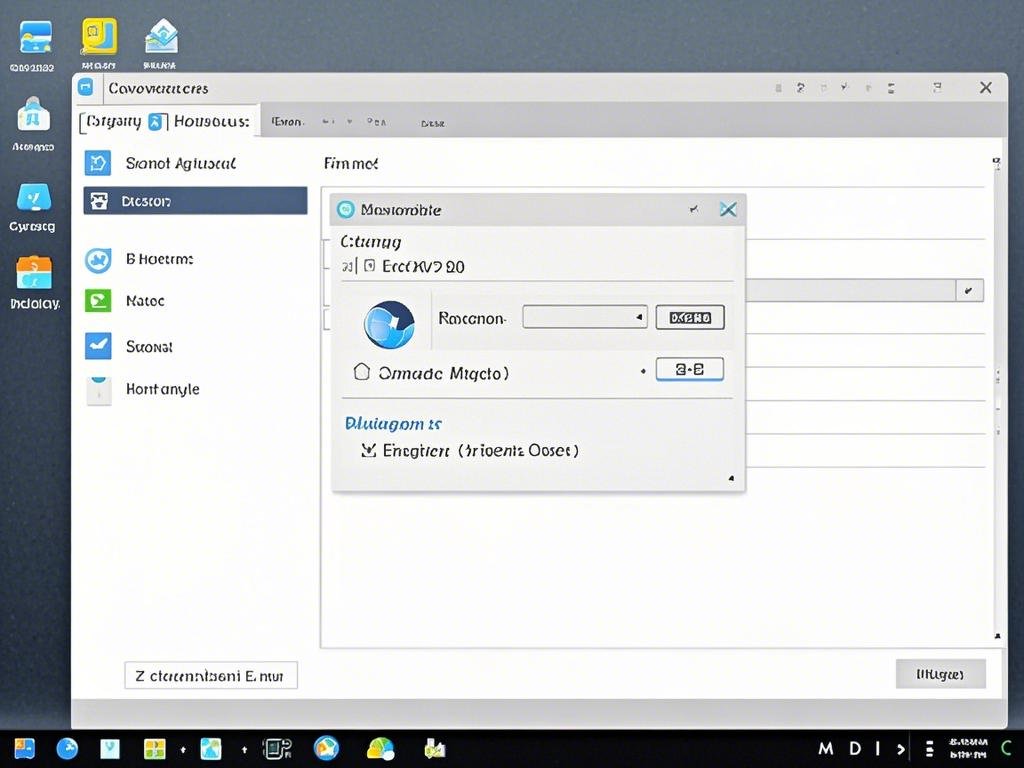Einführung
In today’s remote work environment, being able to access your PC from anywhere has become a necessity. Fortunately, Windows provides a built-in feature called Remotedesktop that allows you to access your computer from another device over the internet or local network. Whether you’re working from home, traveling, or troubleshooting remotely, Remotedesktop is an essential tool for maintaining productivity and control over your system.
In this blog, we’ll walk you through the steps of setting up and using Remotedesktop auf Ihrem Windows machine. Let’s dive into how you can access your Windows PC remotely, from anywhere in the world.
1. What Is Remote Desktop?
Remotedesktop is a feature that allows you to control a computer from a distance. Using Remote Desktop Protocol (RDP), you can connect to a remote computer over a network, as if you were sitting right in front of it. This can be incredibly useful for a variety of tasks, such as:
- Accessing files and applications on your PC remotely.
- Troubleshooting issues on a client’s or colleague’s machine.
- Working on your office PC from home or while traveling.
2. System Requirements for Remote Desktop
Before you set up Remotedesktop, make sure you meet the following requirements:
- Windows Version: Remotedesktop is available on Windows 10 Pro, Enterprise, Und Education editions. If you’re using Windows 10 Home, you’ll need to upgrade to one of these versions.
- Network Connection: You need a stable internet connection for remote access, whether through a local network (LAN) or the internet.
- Remote Desktop Access: The PC you want to access must have Remotedesktop enabled.
3. Step-by-Step Guide to Setting Up Remote Desktop on Windows
a. Enable Remote Desktop on Your PC
- Öffnen Sie die Startmenü and go to Einstellungen.
- Klicken Sie auf System and then select Remotedesktop on the left-hand side.
- Toggle the switch to An to enable Remotedesktop. You may be prompted to confirm the action.
- Klicken Confirm to allow connections to your PC.
b. Check PC’s IP Address
To connect to your PC remotely, you’ll need to know its IP address:
- Drücken Windows + R to open the Run dialog.
- Type cmd and press Enter to open the Eingabeaufforderung.
- Type ipconfig and press Enter. Note down the IPv4 Address, which will be something like 192.168.x.x.
c. Allow Remote Connections on Your Router (For Internet Access)
If you want to access your Windows PC from outside your local network, you will need to configure your router to allow RDP traffic. This involves port forwarding:
- Log into your router’s admin interface (usually via a web browser).
- Look for Port Forwarding oder Virtual Server settings.
- Forward TCP port 3389 to the internal IP address of your PC (the one you obtained in step 3b).
- Save your settings.
Tipp: For better security, it’s recommended to use a VPN (Virtual Private Network) when accessing your system remotely over the internet, instead of exposing RDP directly to the web.
4. How to Connect to a Remote Windows PC
Once you’ve enabled Remotedesktop and set up port forwarding (if needed), you can connect to your remote PC from any device, including another Windows machine, Mac, or mobile device.
a. Connect Using the Windows Remote Desktop Client
- On your local machine, open the Remote Desktop Connection application. You can find this by typing “Remote Desktop” into the Startmenü search bar.
- Enter the IP address of the remote PC (from step 3b) into the Computer Feld.
- Klicken Verbinden.
- Enter your username and password when prompted, then click OK.
b. Using Remote Desktop on Mac
- Download the Microsoft Remote Desktop app from the Mac App Store.
- Open the app and click on the + icon to add a new remote connection.
- Enter the IP address of the Windows PC and your login credentials.
- Klicken Add, then double-click the connection to start your remote session.
c. Connecting with a Mobile Device
You can also use Remotedesktop on mobile devices by downloading the Microsoft Remote Desktop app for iOS or Android. The steps are similar to those on Mac — enter the IP address, username, and password to connect.
5. Using Remote Desktop for Productivity
a. Accessing Files and Applications
Once connected to your remote PC, you’ll have access to all the files and programs that are available on your local machine. You can:
- Open documents, spreadsheets, and presentations just like you would locally.
- Run software applications such as Microsoft Office, Photoshop, or other programs installed on your PC.
b. Multiple Monitor Setup
Windows allows you to use multiple monitors in your Remotedesktop session, provided the host computer (the one you’re connecting to) has more than one monitor. To enable this:
- Before clicking Verbinden, click on Show Options, then go to the Anzeige tab and check the box that says Use all my monitors for the remote session.
c. Clipboard Sharing
You can copy and paste text and images between your local and remote systems. This feature is enabled by default, allowing for seamless file sharing and communication between devices.
6. Troubleshooting Common Remote Desktop Issues
Während Remotedesktop is a great tool, it’s not without occasional hiccups. Here are some common problems and their fixes:
- Cannot Connect to Remote Desktop: Ensure that Remotedesktop is enabled on the target machine and that the network settings are correct (including the firewall and router port forwarding).
- Authentication Errors: Double-check your credentials. If you are using a Microsoft account, make sure to enter the correct username and password.
- Slow Performance: Reduce the display quality in the Remotedesktop settings to improve the connection speed. Under the Experience tab, lower the Color depth and disable unnecessary features like Desktop Background.
7. Security Tips for Remote Desktop
Since Remotedesktop exposes your system to remote access, it’s important to implement best security practices to prevent unauthorized access:
- Use Strong Passwords: Make sure the password for the remote machine is long and complex.
- Enable Network Level Authentication (NLA): NLA requires users to authenticate before a session is established, providing an extra layer of security.
- Use a VPN: When accessing your PC over the internet, always use a VPN to secure your connection.
- Keep Your System Updated: Regularly install security patches and updates to protect against vulnerabilities.
Abschluss
Remotedesktop for Windows is an incredibly useful tool that allows you to access your PC from virtually anywhere in the world. Whether you’re working remotely, troubleshooting an issue, or accessing files while traveling, it provides a simple and effective way to stay connected. By following the steps outlined in this guide, you’ll be able to set up and use Remotedesktop auf Ihrem Windows PC in no time.







 No products in the cart.
No products in the cart.